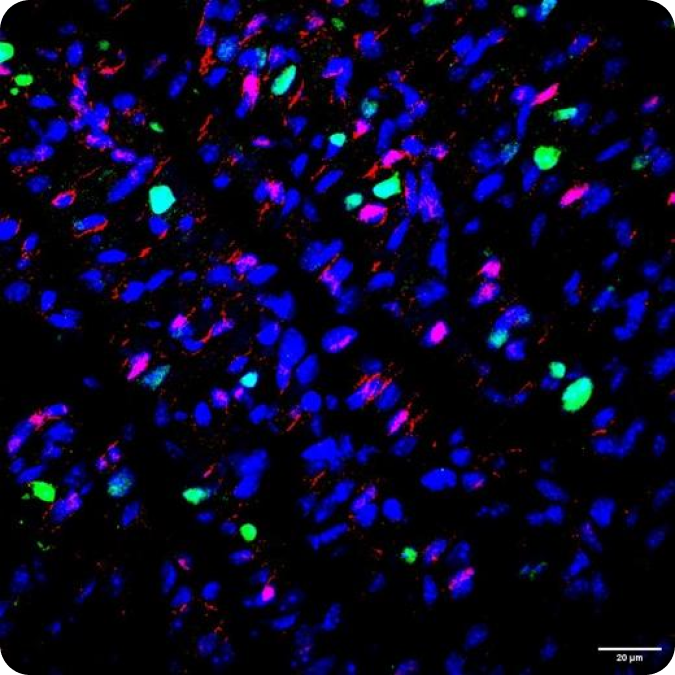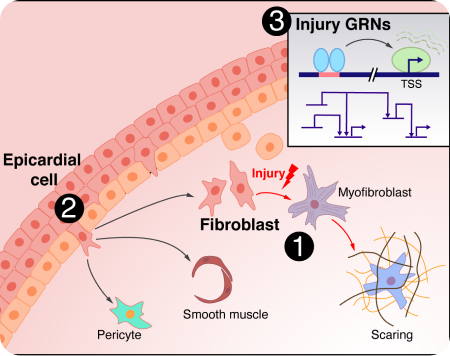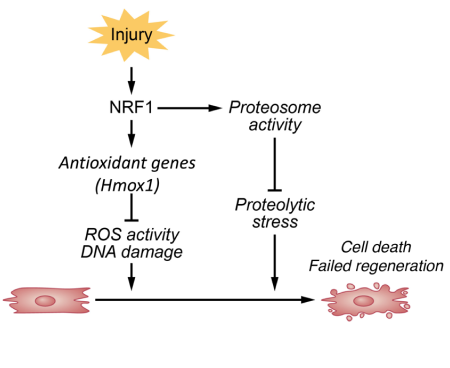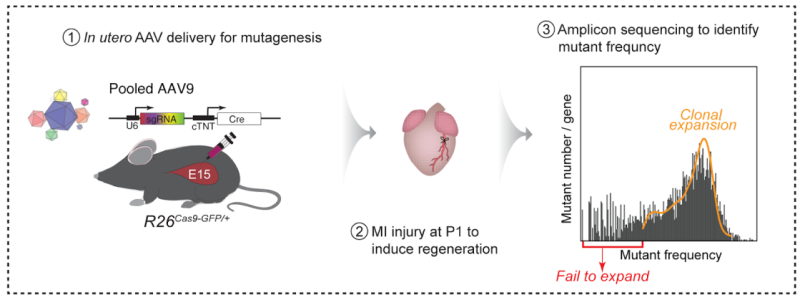Determining which CMs are regenerative is a crucial first step in understanding the molecular processes that enable their regenerative capabilities. Using single-nucleus RNA-seq, we identified a novel CM population, CM4, that is unique to newborn mice and exhibits regeneration features following injury population (Fig. 1A, B). We found that CM4 cells expressed embryonic genes that are associated with cell cycle progression (Fig. 1C) and were localized in the infarct region of the heart after injury (Fig. 1D). These characteristics suggest that CM4 cells are regenerative CMs that are responsible for tissue regrowth during regeneration. We will further demonstrate their role in regeneration using lineage tracing models and identify the molecular mechanisms that are responsible for their regeneration phenotype. We will also use multiple orthogonal approaches in parallel to most accurately construct the lineage relationship of regenerative CMs. Our hypothesis is that regenerative CMs have an inherent capacity to regenerate after injury and are characterized by a distinct transcriptome state. By identifying and manipulating this transcriptome state, we hope to be able to promote regeneration in human CMs



